Fix: WSLRegisterDistribution Failed with Error: 0x8007019e
You may encounter the WSLRegisterDistribution Failed error due to the disabled subsystem for the Linux. Moreover, a corrupt installation of the Linux distro application may also cause the error.
The affected user gets the error when he tries to launch the Linux terminal with the following message:

Before proceeding with the troubleshooting process, try to launch the Linux console using the Windows Search bar (located on the Taskbar of your system), not by the bash.
Solution 1: Enable/Disable Subsystem for Linux
Windows has a feature “Subsystem for Linux” which is essential for the operation of your Linux distribution. If the said option is not enabled, then you may encounter the error at hand. In this case, enabling the option of the subsystem for Linux may solve the problem.
- On the Taskbar, click on the Windows Search bar and type Control Panel. Then in the results shown, click on Control Panel.
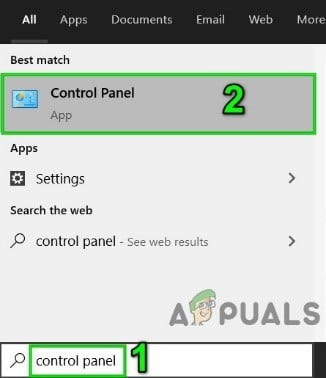
Open Control Panel - Now click on Uninstall a Program.
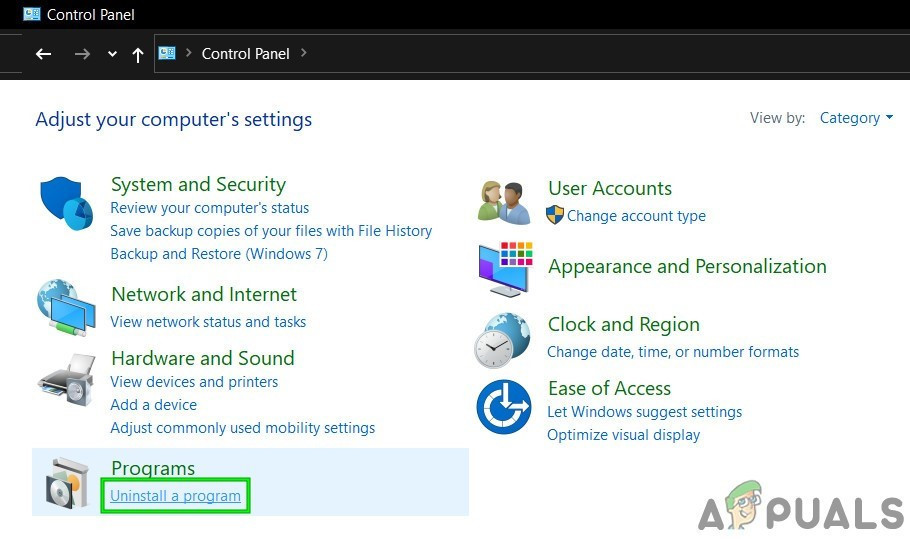
Click Uninstall a Program in Control Panel - Then, in the left pane of the window, click on Turn Windows Feature on or off.

Turn Windows Feature on or off - Now, scroll down till the end and enable Windows Subsystem for Linux Option.
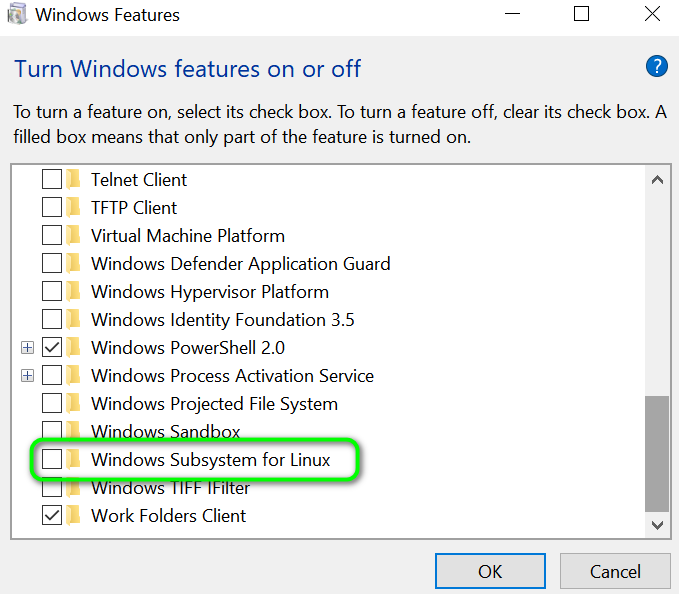
Enable Windows Subsystem For Linux - Then restart your system and then check if the system is clear of the error.
- If the option is already enabled at step 4, then disable it and restart your system.
- Upon restart, enable the Subsystem option and then restart your system.
- Upon restart, check if the Linux distro is working fine.
Solution 2: Restart the LxssManager Service
Linux instance life cycle service i.e. LxssManager operates in the background to keep things under control. You may encounter the error at hand if the said service is stuck in operation or is in an error state. In this scenario, restarting the service may clear the glitch and thus solve the problem.
- Press Windows + R keys to bring out the Run command box.
- Now type Services.msc and then click on OK.
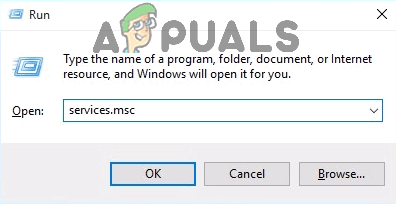
Type “services.msc” into the Run dialog and press Enter - Now find and restart the LxssManager service.

Restart Lxss Manager Service - Then relaunch the terminal to check if it is clear of the error.
Solution 3: Launch the Subsystem from Microsoft Store
Linux distribution has a bug, in which, sometimes the terminal starts to show the error at hand when launched from the shortcut/command prompt. This glitch can be cleared by launching the application directly from the Microsoft Store interface.
- On the Taskbar of your system, click on Windows Search box and type Microsoft Store. Then in the list of results shown, click on Microsoft Store.

Open Microsoft Store - Then, in the top right corner of the window, click on the horizontal Ellipses and then click on My Library.
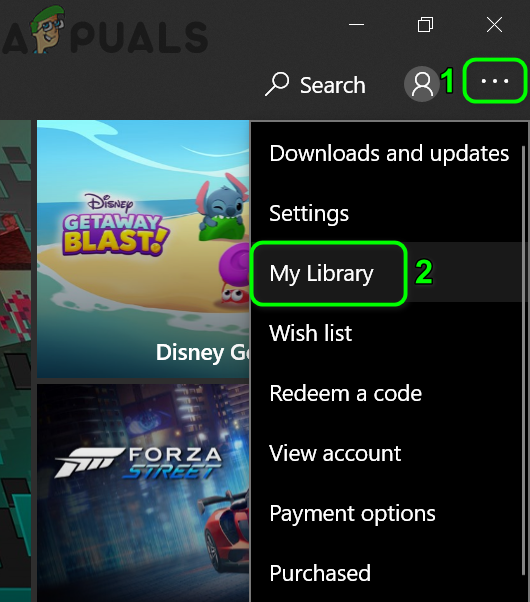
Open My Library in Microsoft Store - Now in the left pane of the window, click on Installed.

Open the Installed Tab in My Library - Then in the right pane of the window, click on your Linux distro App.
- Now click on the Launch button and then check if the issue has resolved.

Launch the Linux Console Application from the Microsoft Store
Solution 4: Update the Linux Terminal by Using Command Prompt
You may encounter the error under discussion if you are using an older version of the distribution. In this context, updating the application may solve the issue. You can use the Command Prompt to achieve the same without reinstalling the application.
- On the Taskbar of your system, click on the Windows Search box and type Command Prompt. Then in the results shown, right-click on Command Prompt and then in the sub-menu, click on Run as Administrator.

Open Command Prompt from Windows Search - Now type the following commands in the Command Prompt and press the enter key after each command:
C:\> bash $ sudo apt-get update $ sudo apt-get dist-upgrade $ <CTRL-D> C:\> exit
- Now, launch the terminal to check if it is clear of the error.
Solution 5: Repair the Linux Terminal App
If nothing has helped you so far, then the issue may have been caused by a corrupt installation of the Linux distribution app. To overcome such corruption, the Repair feature of Windows Settings can be used which will then solve the problem.
- Right-click on the Windows button and click on Settings.
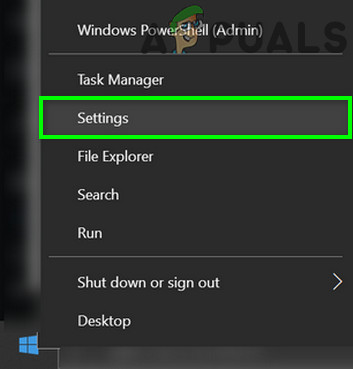
Open Windows Settings - Then tap on Apps.
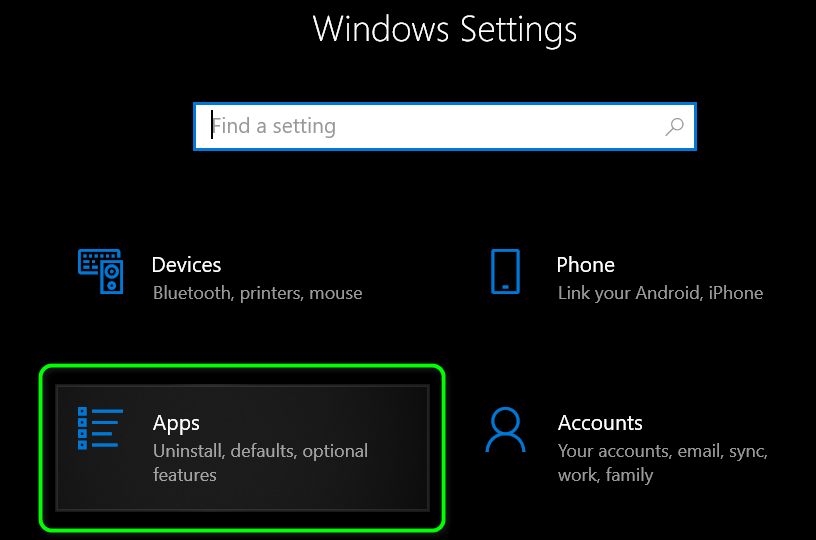
Open Apps in Windows Settings - Now, find and click on your Linux Distribution Application, e.g., if you are using Ubuntu, click on Ubuntu. Then click on Advanced Options.

Open Advanced Settings of the Linux Distribution Application - Now, scroll down till the end and click on the Repair button.
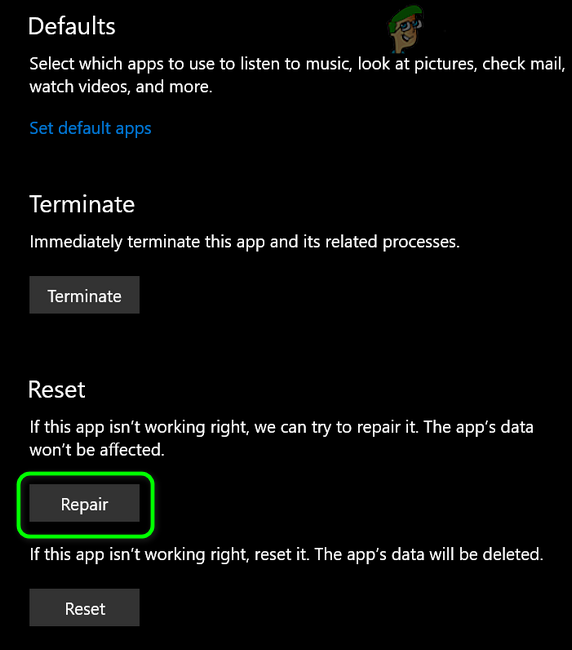
Repair the Linux Distribution Application - After repairing the distro, check if it is clear of the error.
- If not, open Advanced Options (step 1 to 2).
- Then, scroll down till the end and click on the Reset button (your data/settings will be lost).

Reset the Linux Distribution Application - Now, launch the distro to check if it is clear of the error.
Solution 6: Reinstall the Linux Console Application
If the repairing of the Linux console has not solved the issue, then the corrupt module of the application is beyond repairing and you have to manually uninstall and then reinstall the application to solve the problem.
- Right-click on the Windows button and click on Settings.
- Now, find and click on your Linux Distribution Application, e.g., if you are using Ubuntu, click on Ubuntu. Then click on Uninstall.
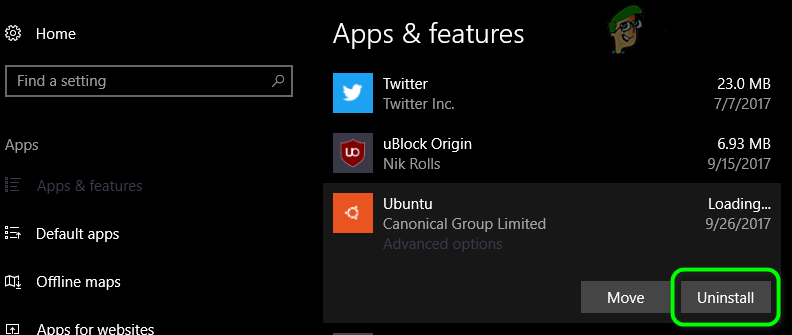
Uninstall the Linux Distribution Application - After uninstalling, disable the Subsystem for Linux Option (as discussed in solution 1) and restart your system.
- Upon restart, enable the Subsystem for Linux (as discussed in solution 1).
- Now install your Linux Console Application and hopefully, your issue has been resolved.
If nothing has worked for you, then you may have to Reset your Windows PC or perform a clean installation of Windows.





